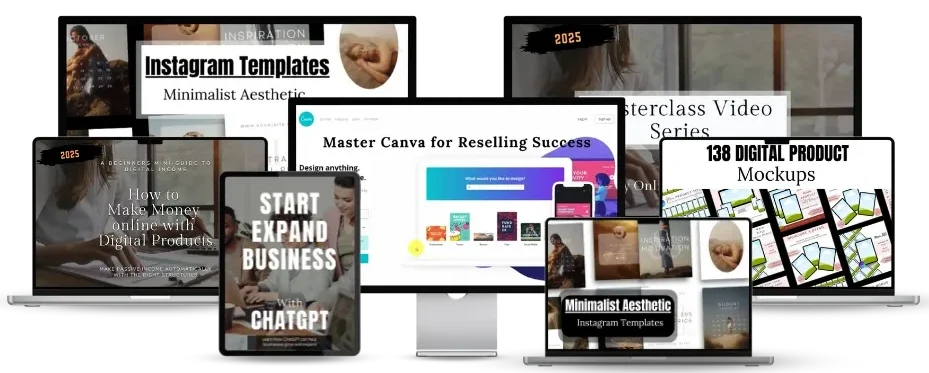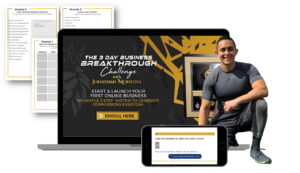Creating digital products that actually sell isn’t just reserved for tech-savvy entrepreneurs or those with endless energy and time.
With the right mindset and approach, even the laziest among us can jump into the digital marketplace and carve out a profitable niche.
This guide is tailored specifically for those who might not have immediate access to copious amounts of time or effort but are still keen on leveraging the power of digital products.
So, let’s dive in and explore how you can get started the lazy way.
The first step is to embrace the idea of starting small and simple.
Rather than attempting to create an elaborate digital empire from the get-go, focus on one product that you genuinely feel connected to or passionate about.
Starting small allows you to learn the ropes without getting overwhelmed.
It also helps you manage your time and energy more effectively, ensuring that you don’t burn out before you even get started.
Consider the type of digital product that aligns best with your interests and skills.
This could be anything from an eBook, a digital art piece, online courses, stock photos, or even a straightforward app.
The key is to select something that you either enjoy doing or are highly familiar with.
Leveraging your existing knowledge or talents will drastically reduce the effort required to create the product, while also making the process much more enjoyable.
One of the essential components of the lazy person’s guide to digital products is outsourcing.
You don’t need to do everything yourself.
In fact, knowing when to delegate is a strength.
Platforms like Fiverr, Upwork, and Freelancer are brimming with talented individuals ready to take care of the aspects that you might not be interested in doing yourself.
For instance, if you’re thinking of writing an eBook but dread the actual writing part, hiring a ghostwriter can be a game-changer.
Similarly, if you want to create an online course but don’t know where to start with video editing, find someone who does.
Tools and software are a lazy person’s best friends.
They simplify and automate countless tasks, saving you time and effort.
For creating eBooks, tools like Canva and Adobe InDesign make design effortless and quick even for the most design-challenged.
Websites like Teachable and Udemy can host your online courses with ease.
Canva, even in its free form, can help you design stunning visuals for social media marketing.
If you’re launching a website to sell your product, platforms like Shopify and WordPress with their myriad of plugins make the entire process less intimidating and more streamlined.
Automation doesn’t just stop at product creation—it extends to your marketing efforts too.
Email marketing services like Mailchimp and ConvertKit allow you to build sequences that run on autopilot.
They nurture potential buyers without needing you to manually send emails to every subscriber.
Social media can also be automated through tools like Buffer and Hootsuite, which schedule your posts, ensuring a consistent online presence with minimum effort.
It’s important to remember that you don’t need to reinvent the wheel.
Look for what’s already performing well in the market and identify gaps that you can fill uniquely.
This eliminates the need to brainstorm a completely novel idea, which can be draining and time-consuming.
Use platforms like Amazon and Udemy to research top-selling digital products in your chosen niche.
Read the reviews and take note of what customers love and what they wish was improved.
This will not only spark inspiration but also guide you on how to improve upon existing products.
Community is another secret weapon.

The 3 Day Affiliate Marketing Challenge
Start & Launch Your First Online Business Using This Simple 3 Step System To Generate Commissions Every Day
Click To Learn More
Join groups and forums of like-minded individuals who are already in the digital product space.
Facebook groups, LinkedIn, Reddit, and specialized forums are goldmines for advice and support.
Engaging in these communities means you can ask questions, get feedback, and maybe even find collaborators interested in similar ideas.
Actively participating doesn’t mean being constantly online.
Even infrequent but focused engagement will benefit you tremendously.
MVP, or Minimum Viable Product, should be a mantra for the lazy digital entrepreneur.
The concept encourages launching a product with just enough features to be usable.
This gets your product into the market faster, allowing you to receive feedback early on.
Instead of endlessly perfecting your product and delaying its launch, focus on getting it out there, then iterating based on real user input.
Pricing is often a sticking point.
The beauty of digital products is that you have significant flexibility.
You need to find the sweet spot between valuing your time and offering something that’s competitively priced.
Researching similar products gives you a benchmark.
If you can offer a unique angle or additional value through bundling (two books for the price of one, lifetime access to updates for an online course, etc.), it can help justify a higher price point.
When it comes to promotion, leverage partnerships.
Reach out to influencers in your niche who might be interested in your product.
Offering them free access or a commission for each sale they drive can be an effective and relatively low-effort way of gaining exposure.
Collaborations with other creators can also lead to cross-promotions that expand your reach considerably.
Feedback loops are critical.
After launching, keep your ears open to customer reviews and comments.
Addressing feedback is a manageable way to continually improve your product without redoing it from scratch.
An iterative process helps keep your product relevant and valuable, and it reduces the need for significant effort down the line since changes are made incrementally.
Lastly, don’t forget to rest and recharge.
The lazy person’s approach is about working smarter, not harder.
Allocate specific times for product development and stick to them.
This approach keeps your energy levels high and prevents the tendency of falling into the trap of feeling like you need to be “always on.”
Taking regular breaks and ensuring you have downtime is crucial in maintaining motivation and focus.
In conclusion, creating digital products that sell doesn’t demand a complete overhaul of your lifestyle or work ethic.
By being strategic, employing the right tools, and leveraging online resources and communities, you can develop and market digital products while maintaining a balanced life.
Remember: the focus is on efficiency and smart choices.
With these strategies in hand, diving into the world of digital products suddenly seems a lot more inviting and, perhaps most importantly, achievable—even for the laziest of us.













